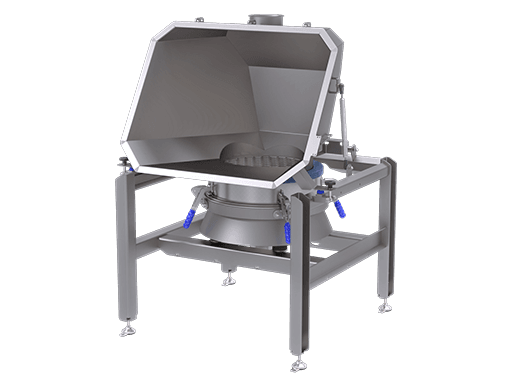Solution
The recently updated Sievmaster Easilift 950 station covered all aspects of the application specifications. The modular nature of the equipment allowed the customer to pick, with advice from the FG technical team, all the elements they required to build their ultimate package.
The dusthood section of the station featured a powerlift mechanism for operator access, this innovative system uses a self-docking seal to couple the hood to the vibratory sieve below removing the need for awkward sleeve connections and minimising downtime and operator interaction.
In order to provide dust extraction the hood was fitted with the optional local extraction system using a vacuum suction module. The module features a pneumatically driven vacuum pump and filter within the hood body which removes the airborne dust inside the hood when the operator is dispensing sacks into the sieve. The volume of extract air flow is further controlled by a simple adjustable sliding baffle plate to the front. The filter is then periodically cleaned by a reverse air jet pulse triggered by closing the hinged front cover assembly.
For the important screening operation the station utilised the powerful Sievmaster Slimline 950 vibratory sieve machine.The whole unit was mounted on a specially design tubular frame with a fold out step and operator platform so the unit could be kept within a compact footprint when not in use. The hinged front cover also ensured that the machine was sealed when not in production between shifts and was ready for immediate use on shift start.



